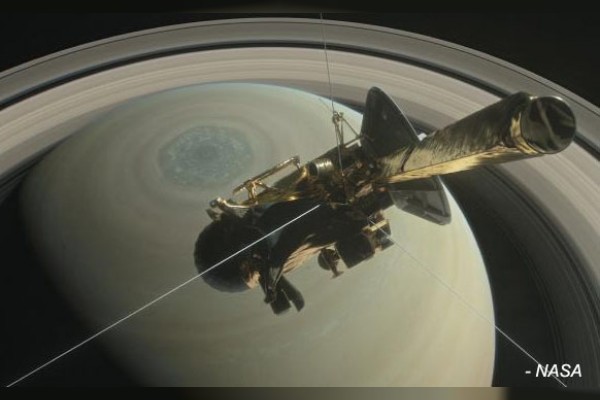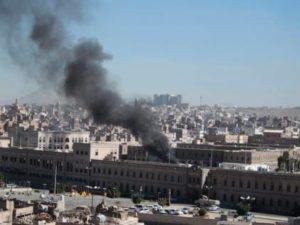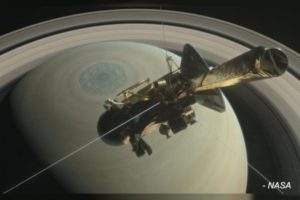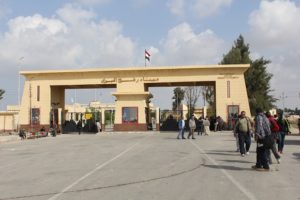NASA’s Cassini Spacecraft on the eve of its mission explorating Saturn.
Washington, MINA – A thrilling epoch in the exploration of our solar system came to a close Friday, as NASA’s Cassini spacecraft made a fateful plunge into the atmosphere of Saturn, ending its 13-year tour of the ringed planet, NASA said on Friday.
“This is the final chapter of an amazing mission, but it’s also a new beginning,” WAM quoted Thomas Zurbuchen, associate administrator for NASA’s Science Mission Directorate at NASA Headquarters in Washington,as saying.
“Cassini’s discovery of ocean worlds at Titan and Enceladus changed everything, shaking our views to the core about surprising places to search for potential life beyond Earth.”
Also Read: Mass Layoffs Hit Federal Agencies Amid Trump’s Government Shutdown
Telemetry received during the plunge indicates that, as expected, Cassini entered Saturn’s atmosphere with its thrusters firing to maintain stability, as it sent back a unique final set of science observations.
Loss of contact with the Cassini spacecraft occurred at 7:55 a.m. EDT (4:55 a.m. PDT), with the signal received by NASA’s Deep Space Network antenna complex in Canberra, Australia.
Cassini’s plunge brings to a close a series of 22 weekly “Grand Finale” dives between Saturn and its rings, a feat never before attempted by any spacecraft.
“The Cassini operations team did an absolutely stellar job guiding the spacecraft to its noble end,” said Earl Maize, Cassini project manager at Jet Propulsion Laboratory (JPL).
Also Read: Brazilian Activist Vows Gaza Aid Flotilla Will Continue Despite Ceasefire
“From designing the trajectory seven years ago, to navigating through the 22 nail-biting plunges between Saturn and its rings, this is a crack shot group of scientists and engineers that scripted a fitting end to a great mission. What a way to go. Truly a blaze of glory.”
As planned, data from eight of Cassini’s science instruments was beamed back to Earth.
Mission scientists will examine the spacecraft’s final observations in the coming weeks for new insights about Saturn, including hints about the planet’s formation and evolution, and processes occurring in its atmosphere. (E/RS5/RS1)
Mi’raj Islamic News Agency (MINA)
Also Read: 6 Mexican Members of Global Sumud Flotilla Return Home After Israeli Detention






























 Mina Indonesia
Mina Indonesia Mina Arabic
Mina Arabic